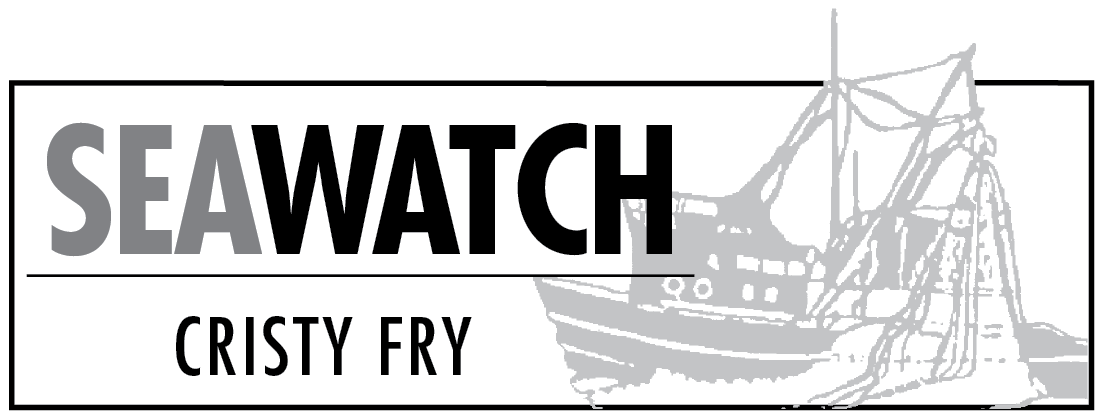The Alaska Seafood Marketing Institute is waging an informational campaign against persistent rumors online and in social media that Alaska seafood is tainted by radiation from the Fukushima nuclear power plant meltdown caused by the massive March 2011 earthquake in Japan.
While there have been problems with fish in the waters near the radiation leak, the affected species are not migratory, and are no threat to Alaska seafood.
The rumors appear to have been started by media reports of the discovery of radioactive isotopes cesium-134 and cesium-137 in Pacific bluefin tuna that migrated from Japan to California waters, published in more than a thousand newspapers world-wide and covered by several thousand Internet, television and radio outlets.
Unfortunately, despite statements by the authors of the original research and other authorities to the contrary, these media reports led to widespread belief that fish on the Pacific coast of the U.S. now contain harmful levels of radioactive chemicals.
The fears are completely unfounded, but have led to the dissemination of interesting facts about radiation.
For example, bananas are radioactive. Not at a harmful level, but they do carry a naturally occurring radioactive isotope. Foods high in potassium have higher levels than most other foods.
A typical restaurant-sized portion of Pacific bluefin tuna, about seven ounces, contains about 5 percent of the radiation you would get from eating one uncontaminated banana and absorbing its naturally occurring radiation.
The levels in tuna are so low, one would have to eat 4,000 pounds of albacore a year just to increase their average annual dose of radiation by one percent.
A 2012 study from the Proceedings of the National Academy of Sciences found levels of cesium-138 and cesium-134 in bluefin tuna to be roughly 300 times lower than levels that would prompt the FDA to investigate further to determine if there was a health concern.
ASMI wants consumers and harvesters to know that Alaska seafood is 100 percent safe to eat, and is distributing fact sheets about the issue.
The fact sheet states that numerous agencies have been keeping an eye on radiation levels in Pacific seafood, including the FDA, EPA, NOAA, Alaska DEC, IPHC, Woods Hole Oceanographic Institute, the European Union (checking imports), and others, and no dangerous or even elevated levels of radioactivity has been found in any species of Alaskan seafood.
One of the concerns has been that migrating salmon may swim into contaminated waters on their migration route.
The most recent salmon migration studies have found that they do not travel past 170 degrees east longitude, a bit west of Adak and thousands of miles from Japan.
ASMI stresses as always that Alaska seafood is wild, natural, sustainable, healthy and 100 percent safe, and consumers would be better off with more of it in their diet rather than less.
Pink salmon fishermen are cheering successful efforts by Sen. Lisa Murkowski to get the USDA to purchase large amounts of their product for food banks nation-wide.
Murkowski recently was able to help convince Agriculture Secretary Tom Vilsack to use $20 million in existing funds to purchase Alaska canned pink salmon for Americans in need through The Emergency Food Assistance Program.
“When I initially encouraged Secretary Vilsack to consider using TEFAP funds to help provide healthy food for Americans in need, my goal was to ensure that food banks and their partners would have greater access to a wide variety of healthy foods,” Murkowski said. “Every Alaskan knows that our salmon is brain food and full of protein, so I suggested the Department of Agriculture consider our nutritious and delicious salmon for food banks nationwide experiencing high levels of need.”
Murkowski also was instrumental in the recent $126 million purchase of fruits and vegetables for food banks.
Upper Cook Inlet salmon fishermen are girding for the upcoming Board of Fisheries meeting to hash out regulations for their fishery for the next three years, and are especially concerned about a proposal to manage for the weakest stocks.
Proposal 103 will be first out of the chute, and the practicality of all other proposals rests on it.
It would amend the management plan to prioritize achieving the lower end of escapement goals on weak runs rather than avoiding over-escapement on the strong runs.
It could effectively put the commercial fishery out of business, because no harvest could take place until weaker runs were sure to make their escapement goals, some of those runs hampered by pike, beaver dams, culverts and disease.
It also could end up eventually decimating stronger runs such as Kenai River sockeye due to even more excessive, repeated over-escapement than is already being experienced.
The Kenai River system is showing signs of stress due to over-escapement, with smaller sockeye smolt sizes, less feed in the lakes for smolt and smolt staying two years in fresh water instead of one because they are not big enough to out-migrate to salt water, eating food needed by the subsequent generation.
The Board of Fisheries meetings are Jan. 31 through Feb. 13 at the Egan Convention Center at 555 W. 5th Ave in Anchorage.
Seawatch will be covering the meetings and providing updates every two to three days. Check the website at www.homernews.com/seawatch. Seawatch also will be tweeting, @blueboathomer.
Fisherman Frank Mullen will be tweeting all pertinent information and decisions. Follow him on Twitter, @frankmullen.
Cristy Fry has commercial fished out of Homer and King Cove since 1978. She can be reached at realist468@gmail.com.



